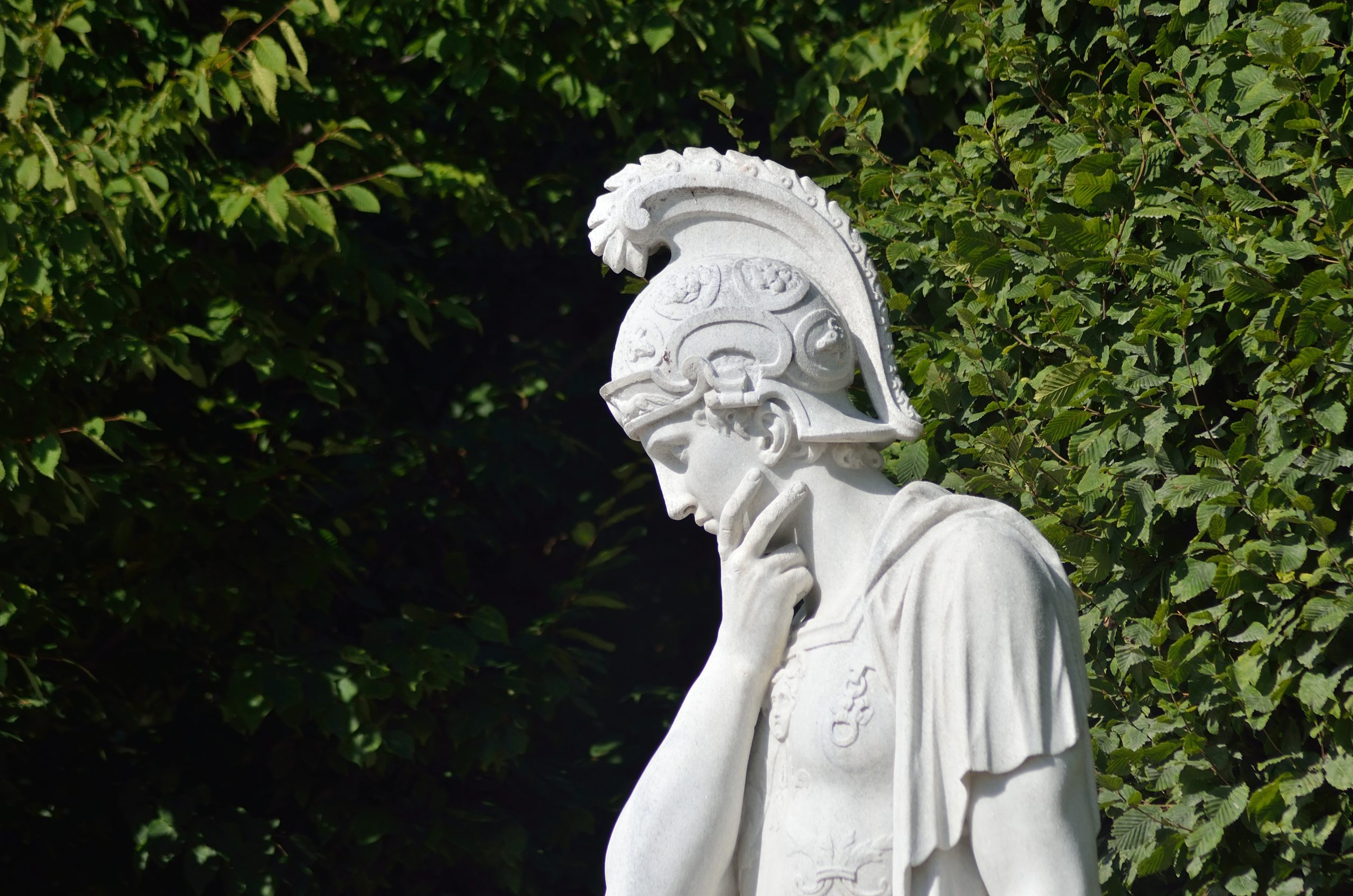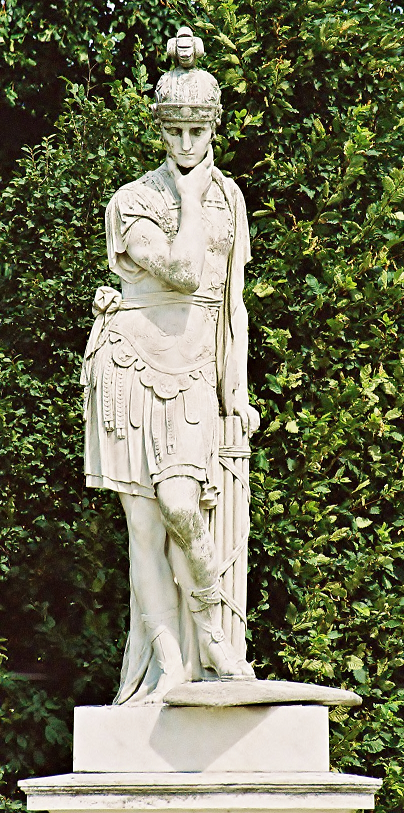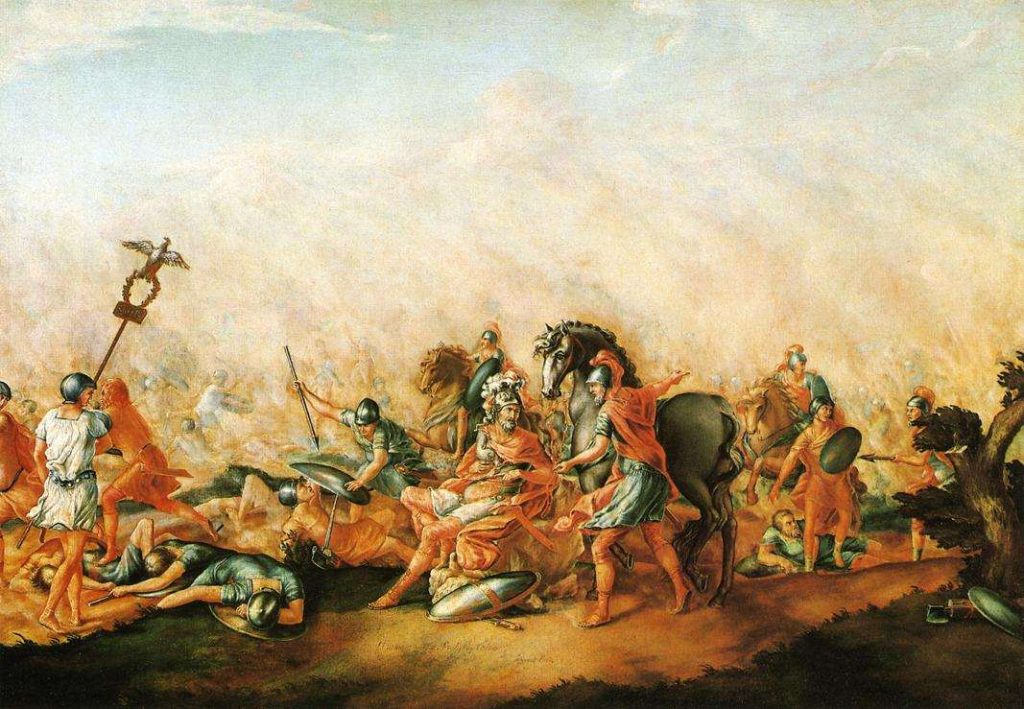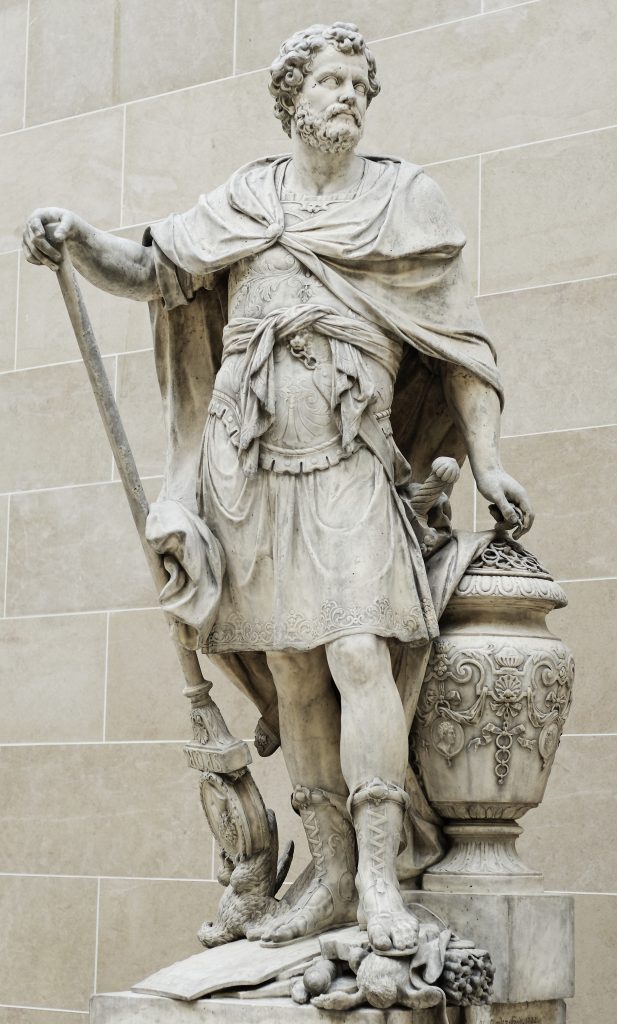
Statue of Quintus Fabius Maximus in Schönbrunn Palace Park. Vienna, Austria. Photo by Herzi Pinki, CC BY-SA 4.0
In the ruthless powerscape of the Roman Republic, military leadership represented quite an opportunity for many ambitious young men. The most significant moment in a military leader’s life was a triumph over the enemy. To achieve that pinnacle of glory, a military leader needed to possess certain qualities like strategic brilliance, unmatched decisiveness, and fearlessness in the face of adversity. When prudence and resilience were added to these qualities, the result was an unparalleled wellspring of power. Quintus Fabius Maximus Verrucosus, often referred to as Fabius Maximus or simply Fabius, represents a great example of prudence, strategy, and resilience. His pivotal role in the Second Punic War, where he employed a unique and unconventional strategy, earned him the title “Cunctator” or “The Delayer.” By craftily targeting the enemy’s vital supply lines, he could confront a mightier adversary with consummate ease.
Early Life and Rise to Prominence
Quintus Fabius Maximus Verrucosus belonged to one of the most distinguished families of the Roman Republic. His family’s prominent position in Roman society and the noble lineage shaped early the young Fabius and opened the possibility of becoming the prudent and brilliant strategist who would follow the ideal of greatness.

The Fabian gens had a storied history of military and political service to the Roman Republic. This legacy of public service and dedication to Rome’s welfare deeply influenced young Fabius. From an early age, he was exposed to the traditions and expectations that came with being a member of such a renowned family. The Fabians were known for their steadfast commitment to the Roman Republic and their unwavering loyalty to its values.
Educational Foundations
So, how to raise a child to remain loyal to it too? Fabius Maximus’s early education was marked by the rigorous training typical for Roman patricians. He received a comprehensive education that included studies in literature, rhetoric, philosophy, and history. This broad education not only honed his intellectual abilities but also instilled in him a deep appreciation for Roman culture and history.
As he entered adolescence, Fabius Maximus began to show a keen interest in the military affairs of the Roman Republic. This interest was not surprising, given his family’s tradition of military service. His father, Marcus Fabius Maximus Rullianus, had been a respected general who played a significant role in the First Punic War. Young Fabius looked up to his father as a role model and source of inspiration. The Second Punic War was the perfect opportunity to prove himself.
Fabius Maximus’ Role in the Second Punic War
The Punic Wars, a series of three conflicts between Rome and Carthage spanned over a century, beginning in 264 BCE and ending in 146 BCE. The Second Punic War, which took place from 218 to 201 BCE, is where Fabius Maximus made his indelible mark.
The Second Punic War was characterized by the remarkable Carthaginian general, Hannibal Barca, who posed a significant threat to Rome. Hannibal’s daring crossing of the Alps and subsequent victories on Roman soil sent shockwaves throughout the Roman Republic. In response to the crisis perceived as the worst in Roman history, Fabius Maximus was appointed dictator in 217 BCE.
The “Fabian Strategy”
Hannibal’s forces were a great challenge, so the Romans needed an efficient strategy. In that situation, Fabius Maximus came up with an innovation. “Fabian Strategy” defied conventional Roman military tactics and involved avoiding pitched battles with Hannibal’s army while engaging in a policy of delay and attrition.
Fabius believed that the key to Rome’s success lay in depriving Hannibal of decisive victories. He advocated for avoiding open conflict, opting instead for guerrilla warfare and small-scale skirmishes. The overarching goal was to wear down Hannibal’s forces over time, cutting off his supply lines and isolating him from reinforcements.
Plutarch, Greek historian and essayist, wrote about Fabius:
Many Romans of that era wanted blood, decisive battles, and swift victories. During his consulship, Fabius Maximus didn’t win large-scale battles and his strategy was met with skepticism and impatience. So, the Senate removed him from command. His replacement was Gaius Terentius Varro who directly led the Roman army into the debacle at the Battle of Cannae.

The catastrophic defeat taught Romans a lesson. Only by applying Fabius’ strategy, Hannibal could be driven from Italy. Although after Cannae Hannibal repeatedly defeated Roman units on more occasions, whenever his army wasn’t active, the Romans sought battle with Carthaginian or Carthaginian-allied detachments. These small battles were frequently won with success. By 208 BC many Italian cities returned to Roman allegiance. In time, as the Carthaginians were weakened, Roman supremacy was greater. They will show it in the battles of Insubria in 203 BC, and finally Zama in 202 BC. The Carthaginians suffered severe defeat and they capitulated.

So, Fabius Maximus taught impatient Romans a lesson. Firstly, he demonstrated the importance of adaptability in the face of formidable adversaries. Secondly, his unwavering commitment to Rome’s ultimate victory set an example for future military leaders and statesmen. Medieval French General Bertrand du Guesclin applied this strategy during the Hundred Years’ War against the English. George Washington was sometimes called the “American Fabius” because of his use of the strategy during the first year of the American Revolutionary War. The Russians used it against Napoleon’s Grande Armée in 1812 and it proved successful. Sam Houston successfully employed it in the aftermath of the Battle of Alamo against Santa Anna’s much larger force. The successful examples of employing this strategy in the 20th century include WWI and the First Indochina War which resulted in the Vietnamese victory at Dien Bien Phu. The Fabian Strategy is still studied in military academies worldwide as a testament to the power of patience and strategic thinking.
Although he faced skepticism, through his tactical brilliance during the Second Punic War, Quintus Fabius Maximus Verrucosus earned a place of distinction in the annals of Roman history. His innovative “Fabian Strategy” ultimately contributed to the Roman Republic‘s triumph over Carthage in the Punic Wars and stands as a timeless lesson in strategic thinking and leadership. Fabius Maximus’ name lives on as a symbol of prudence, adaptability, and unwavering commitment to the survival and success of the Roman Republic during its most challenging times.